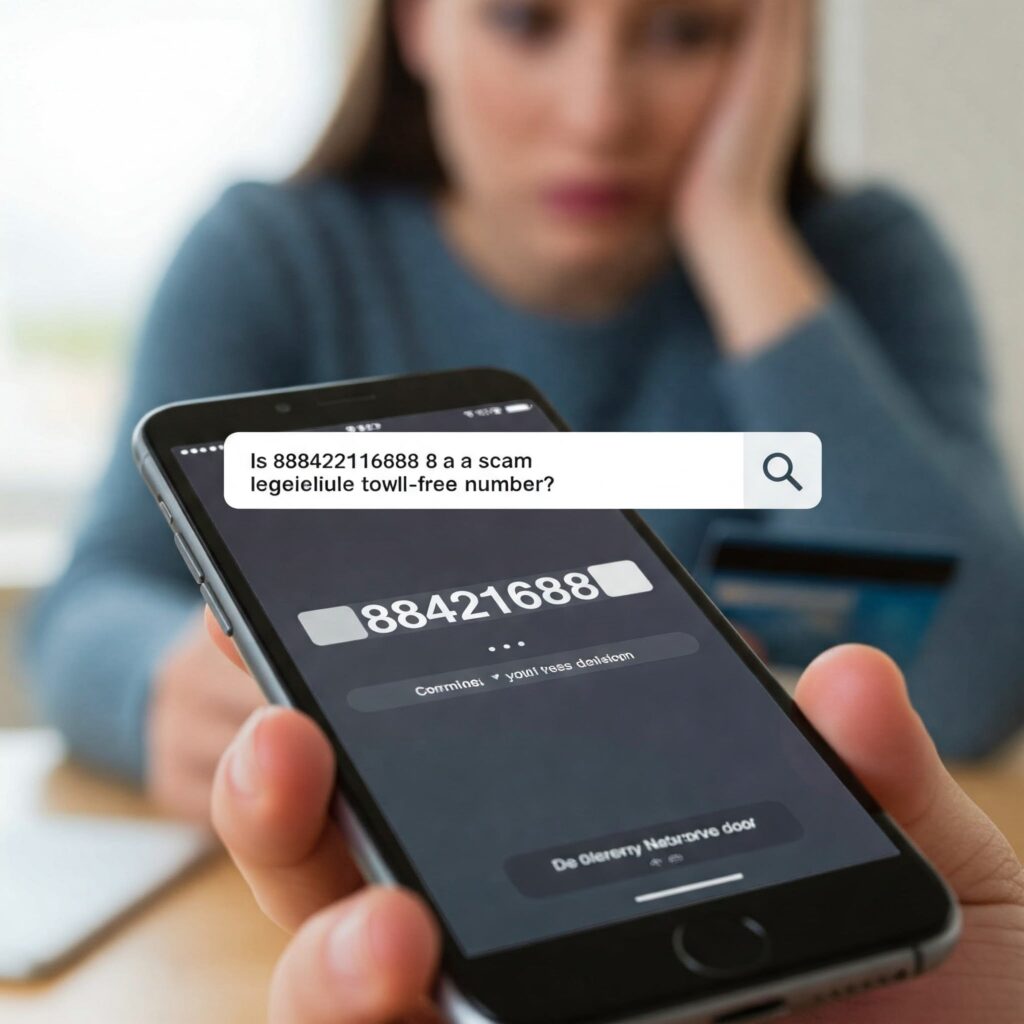In 2025, the phone number 8884216488 has garnered attention due to its association with toll-free number scams. Scammers often exploit such numbers to deceive individuals into sharing personal information or incurring unexpected charges. Understanding the mechanisms of these scams is crucial for safeguarding oneself against potential fraud.
Current Trends in Toll-Free Number Scams (2025)
Toll-free number scams have evolved, with fraudsters employing sophisticated techniques to deceive unsuspecting individuals. Key trends include:
- Misdialing Exploitation: Scammers acquire numbers similar to legitimate toll-free numbers, banking on accidental misdials to initiate fraudulent interactions.
- Caller ID Spoofing: By manipulating caller ID information, scammers make their calls appear as though they’re from trusted organizations, increasing the likelihood of engagement.
- Robocalls and Mass Dialing: Automated systems are used to place numerous calls, often delivering pre-recorded messages that prompt recipients to take immediate action, leading them into scams.
- Abandoned Number Reassignment: Cybercriminals repurpose discarded toll-free numbers, previously associated with reputable entities, to lend credibility to their fraudulent activities.
Expert Insights: The Mechanics of Toll-Free Scams
Experts highlight that scammers often:
- Impersonate Trusted Entities: By posing as representatives from banks or government agencies, they instill a sense of urgency and legitimacy.
- Solicit Sensitive Information: Victims are prompted to provide personal details, such as account numbers or passwords, under the guise of verification processes.
- Leverage Technology: Advanced tools enable scammers to mask their true identity, making detection and prevention more challenging.
A study by Pindrop Security revealed that nearly 1 in 6 financial institutions have been targeted by misdial scams, emphasizing the widespread nature of this issue.
Challenges and Solutions
Challenges:
- Public Awareness: Many individuals remain unaware of the nuances of toll-free scams, making them susceptible.
- Technological Sophistication: Scammers continuously adapt, employing new technologies to bypass security measures.
Solutions:
- Education Campaigns: Organizations should invest in educating the public about recognizing and avoiding scams.
- Verification Protocols: Implementing multi-factor authentication can add layers of security, reducing the risk of unauthorized access.
- Reporting Mechanisms: Encouraging individuals to report suspicious numbers can aid in tracking and mitigating scam operations.
Actionable Tips to Protect Yourself
- Verify Before Sharing: Always confirm the identity of the caller before divulging personal information.
- Use Official Channels: Contact organizations through their official websites or verified contact numbers.
- Be Skeptical of Unsolicited Calls: If a call seems suspicious, it’s safer to hang up and verify independently.
- Utilize Call-Blocking Tools: Leverage technology to block known scam numbers and reduce exposure.
- Regularly Monitor Accounts: Keep an eye on financial statements for any unauthorized transactions.
Conclusion
The number 8884216488 serves as a reminder of the persistent and evolving nature of toll-free number scams in 2025. By staying informed and vigilant, individuals can significantly reduce their risk of falling victim to such fraudulent activities. Continuous education and proactive measures are essential in combating these threats.
Frequently Asked Questions (FAQ)
Q1: What should I do if I receive a call from 8884216488?
A1: If you receive a call from this number, avoid sharing any personal information. Hang up and report the number to relevant authorities or your phone service provider.
Q2: How can I verify if a toll-free number is legitimate?
A2: Cross-reference the number with official contact information provided on the organization’s official website or trusted directories.
Q3: Are all toll-free numbers safe to call?
A3: Not necessarily. While many toll-free numbers are legitimate, scammers can acquire similar numbers to deceive individuals. Always verify before calling.
Q4: How can I report a suspicious toll-free number?
A4: You can report suspicious numbers to your local consumer protection agency, the Federal Trade Commission (FTC), or your phone service provider.
Q5: What are common signs of a toll-free scam call?
A5: Common signs include unsolicited calls requesting personal information, high-pressure tactics, and callers claiming to be from reputable organizations without proper verification.

